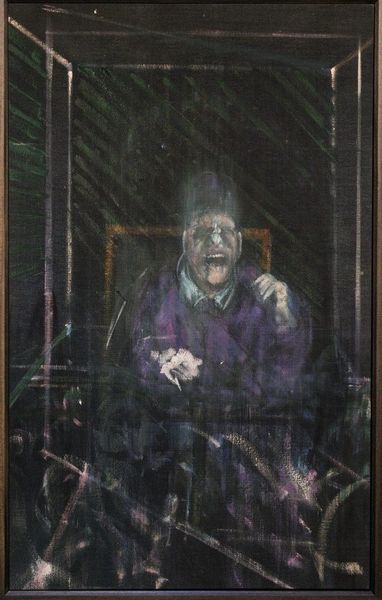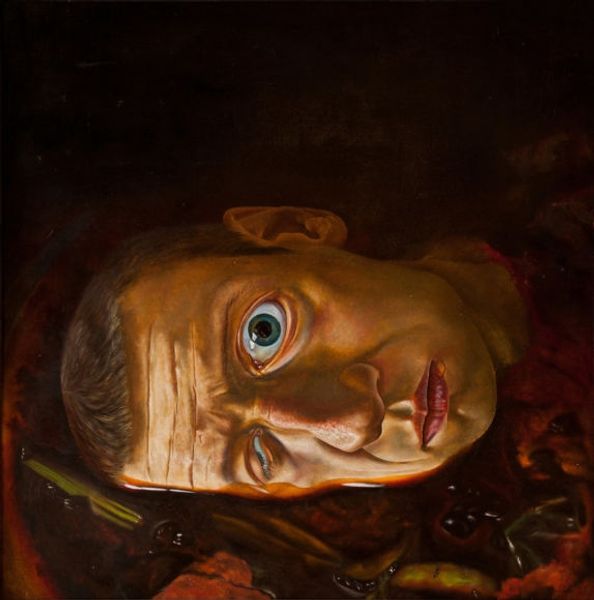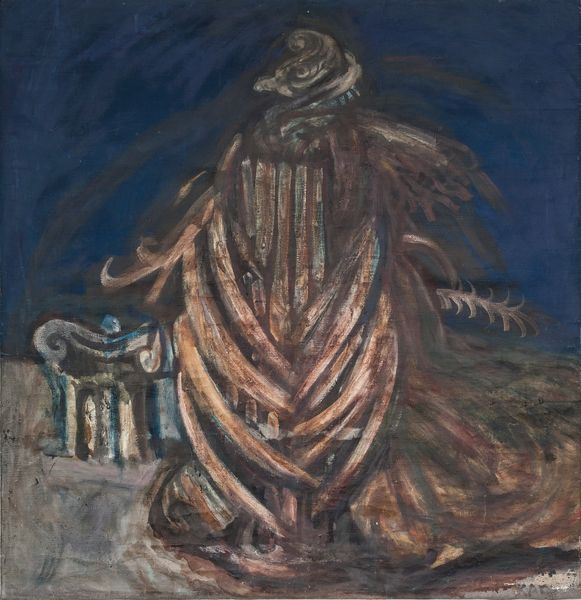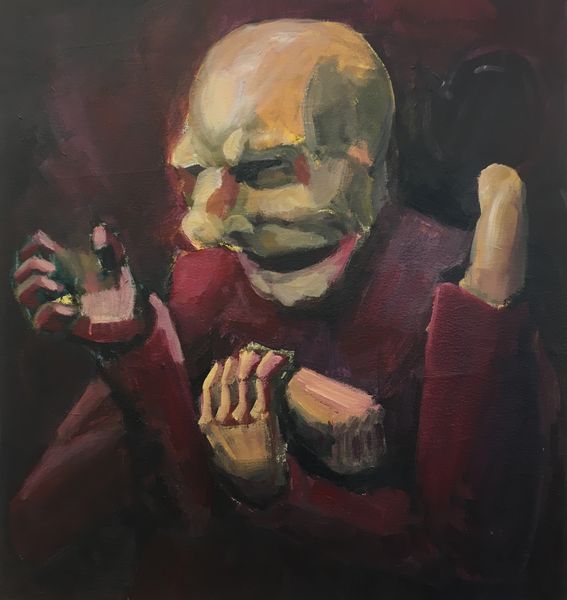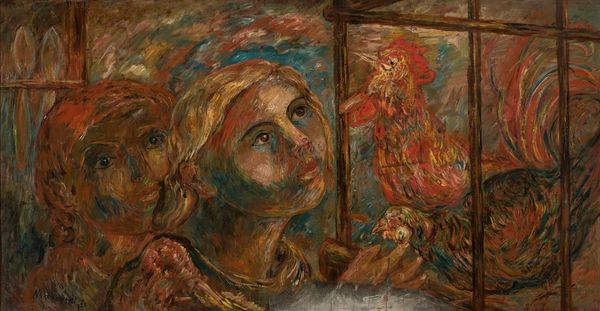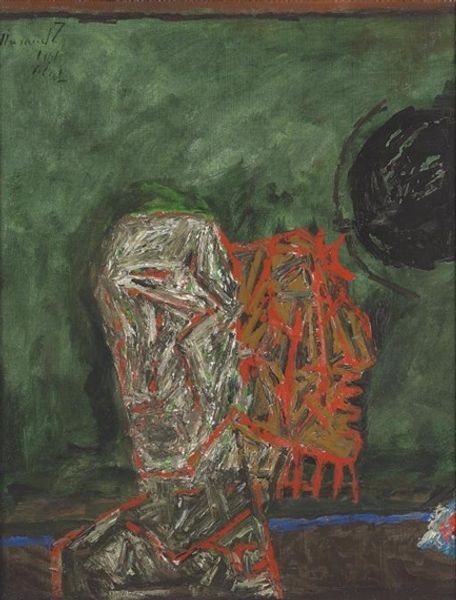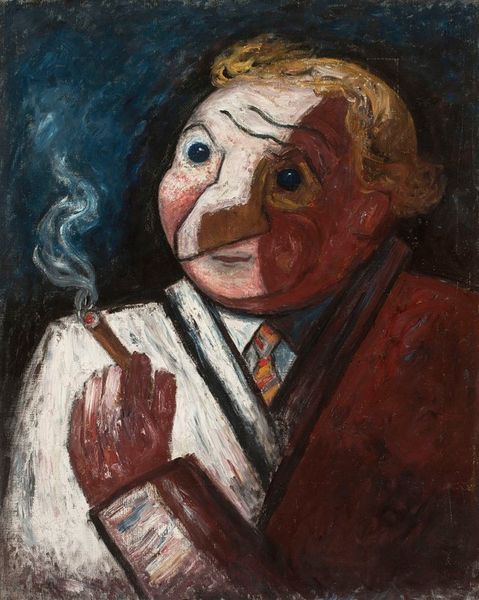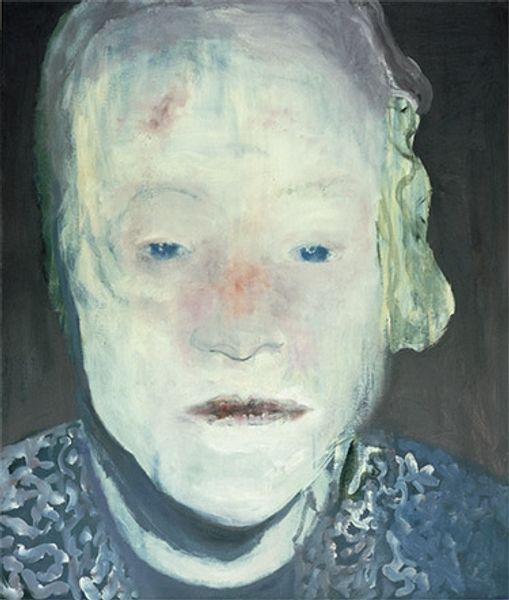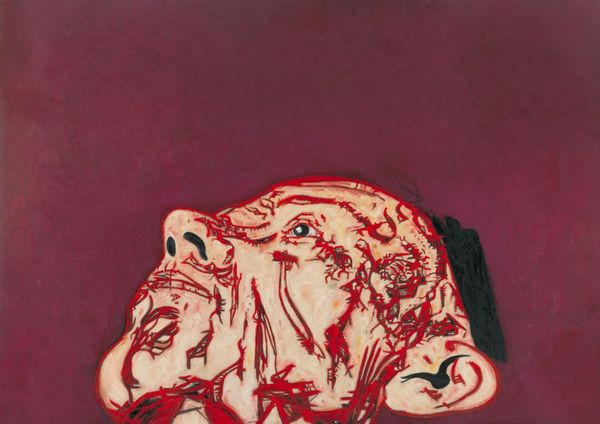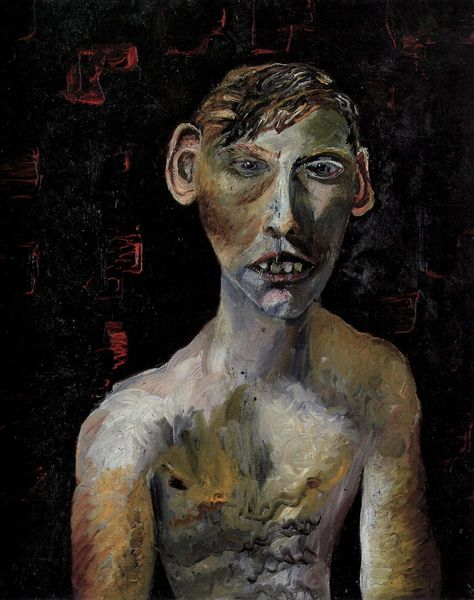
oil-paint
#
portrait
#
oil-paint
#
german-expressionism
#
figuration
#
oil painting
#
expressionism
#
portrait drawing
#
portrait art
#
watercolor
Copyright: Public domain
Editor: Here we have Walter Gramatté's "The Ill With The Flowers," an oil painting, but of an unknown date. It's a strikingly sad image; the blue skin and oversized eyes of the figure are haunting, particularly coupled with the surrounding deep reds. How do you interpret this work? Curator: It’s easy to see the sadness you mention, but I see it as more than just that. Let's think about the title – "The Ill With The Flowers." What does the juxtaposition of illness and flowers evoke for you, especially considering the social context of early 20th century Europe, a period marked by significant disease outbreaks and high mortality rates? Editor: I guess it creates a contrast between beauty and decay, life and death? The flowers seem to offer some solace against the pallor of sickness. Curator: Precisely. But let’s push that further. Gramatté was associated with German Expressionism. What role do you think that plays in portraying illness here, in contrast with more naturalistic art styles? Editor: I see Expressionism is used here to amplify emotions, using distorted features and unnerving colors to depict the physical and psychological toll of being ill, but it also reflects the feelings of the artist when looking at pain and suffering. Curator: Exactly! And thinking about who has historically been depicted as ill – often marginalized groups – what statement might Gramatté be making about society's attitude towards the vulnerable? Is it possible he's inviting empathy, forcing the viewer to confront uncomfortable truths? Editor: That makes a lot of sense. The direct gaze definitely feels like an invitation—or maybe a challenge—to empathize. I hadn’t considered the power dynamics at play. Curator: Art often serves as a mirror, reflecting not only the subject, but the society in which it was created. So, beyond personal sadness, can you see it speaking to something larger? Editor: Absolutely. The painting isn't just about individual suffering. It reflects societal anxieties and invites us to confront uncomfortable truths about illness, vulnerability, and the human condition. Curator: And that makes it a powerful piece, indeed.
Comments
No comments
Be the first to comment and join the conversation on the ultimate creative platform.
